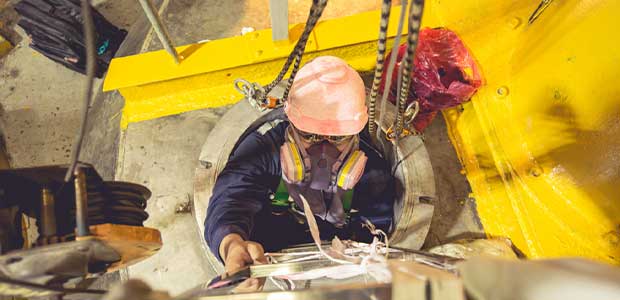
Specific PPE is Needed for Entry and Exit
Understanding the risks can better prepare entrants and supervisors when selecting PPE.
- By Anne Osbourn
- Aug 01, 2022
Confined spaces present health and safety risks for many workers, which is why recognizing and planning appropriately for working in confined spaces is so important. A confined space can be defined as an area that is large enough for an employee to physically enter and perform work, has limited or restricted means of entry or exit, and is not designed for continuous human occupancy.
Prior to commencing work in confined spaces, employers must carefully identify and assess the hazards in order to determine which precautions to take. For full compliance with OSHA standard governing confined spaces, 29 CFR 1910.146, it is necessary to rely upon the expertise of safety and health professionals such as industrial hygienists.
It is critical that procedures for confined space entry are followed and that necessary PPE is in use before any worker enters such areas, especially where there is a reasonably foreseeable risk of serious injury in entering or working in the confined space.
PPE for confined space work goes beyond simply one or two pieces of equipment. Confined space PPE spans fall protection, gas detection, respiratory protection and of course, head protection. But why does confined space PPE seem so complex? Here is a breakdown of the risks associated with PPE entry and exit, and why proper PPE is so important.
Fall Protection
Confined space entry and retrieval equipment may be necessary to facilitate both entry into and exit from confined spaces. Proper retrieval systems for both workers and equipment consist of a full-body harness, tripod or davit systems and appropriate connecting devices.
Retrieval equipment is useful in lowering workers into confined spaces as it controls descent rate and prevents accidental falls into the work area. Additional work hoists are frequently used to raise and lower tools and equipment. Every entrant should always wear a full-body harness and have some sort of lifeline attached to the harness—even in horizontal entry applications. If an entrant becomes non-responsive, the lifeline can be used to haul the worker out as a non-entry rescue.
If a worker must be quickly extracted from a confined space without entrance of another worker into that confined space (non-entry rescue), lifting equipment employs concepts of physics to raise entrants out of work areas. Hoists typically have a mechanical advantage of 5:1. It is very difficult for an average person to pull someone out of a deep manhole without some mechanical advantage.
This article originally appeared in the July/August 2022 issue of Occupational Health & Safety.